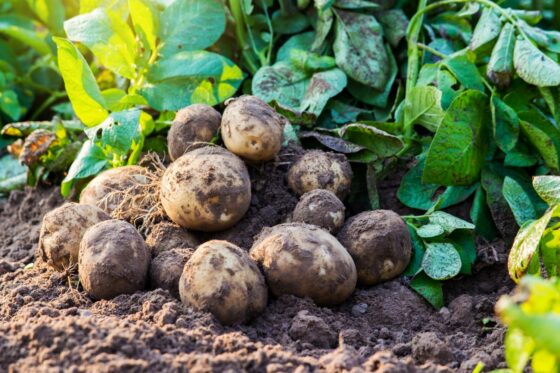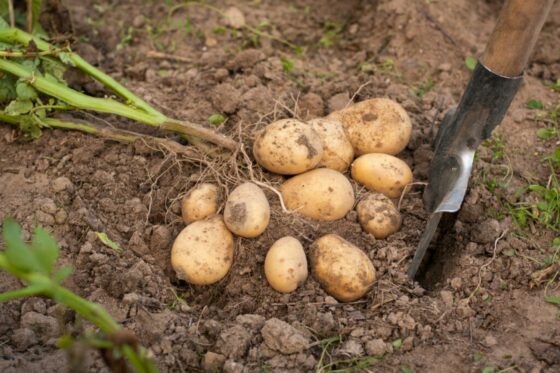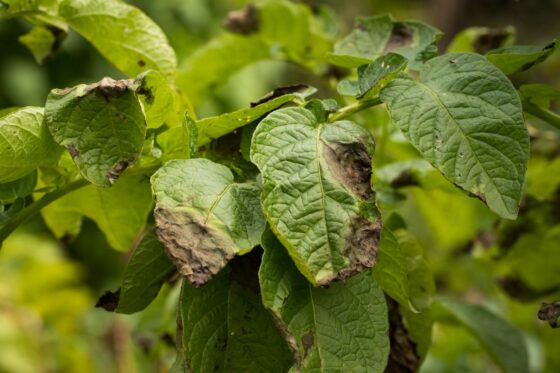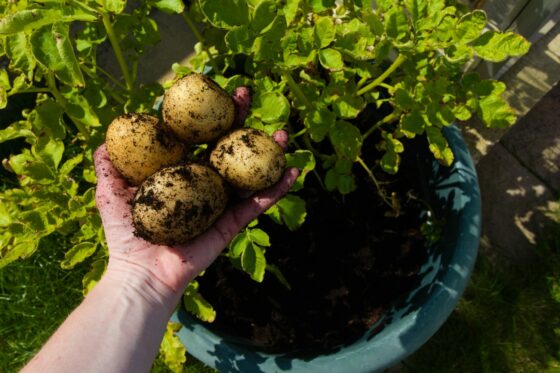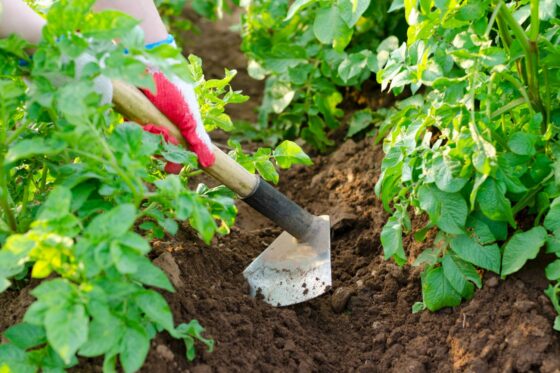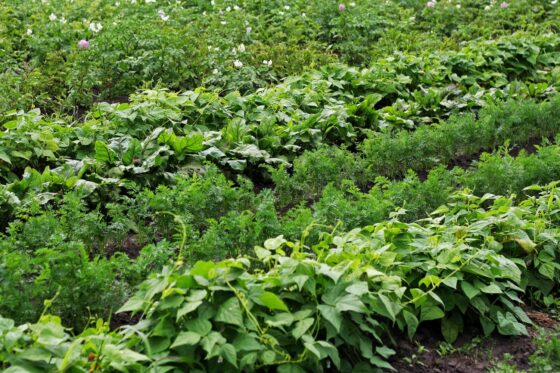Storing potatoes: how & where to keep them
Potatoes are known for their long shelf life, and when stored correctly, you can make this even longer. Read on to learn more about how to store potatoes correctly.
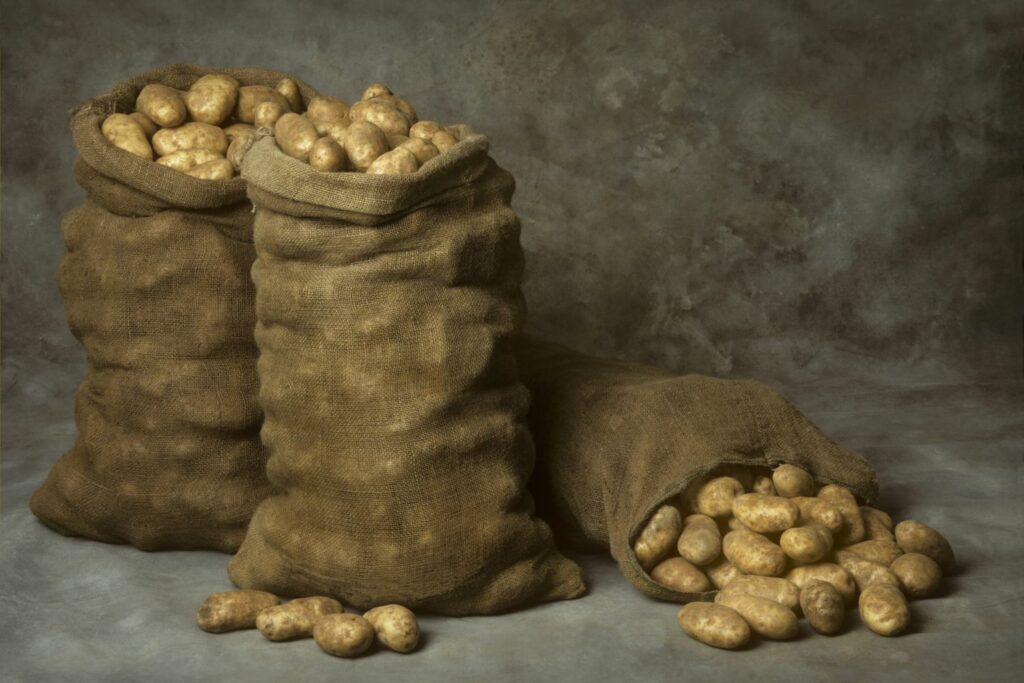
The humble potato (Solanum tuberosum) has been a staple in Europe for centuries and nowadays, it is grown in lots of gardens for self-sufficiency. Of course, a bountiful potato harvest needs to be stored properly so that you can enjoy the nutritious tubers in the months to come. Here are some tips on how to store freshly harvested potatoes.
Contents
Where to store potatoes
The delicious starchy tubers can keep for months if stored correctly. Wooden crates, air-permeable jute sacks (or other potato storage bags) and wicker baskets are all suitable for storing potatoes. When it comes to choosing a location, the most important factors to bear in mind are temperature, exposure to light and humidity.
Cool temperatures
The best way to store potatoes long term is to keep them in a cool, dark place around 5 to 8°C. The metabolism inside the potato slows down considerably at these temperatures, so that the tubers stay the same and remain edible for as long as possible. If possible, store your potatoes in a cellar. However, you can also store potatoes in the fridge if you do not have a cellar. Storing potatoes outside is not advised, because the temperatures can be too low in winter and quickly lead to frost and damage from the cold. When the temperatures rise again, the tissue then becomes mushy which is the ideal environment for pathogens. Other alternatives to cellars include frost-free conservatories, garages and garden sheds.
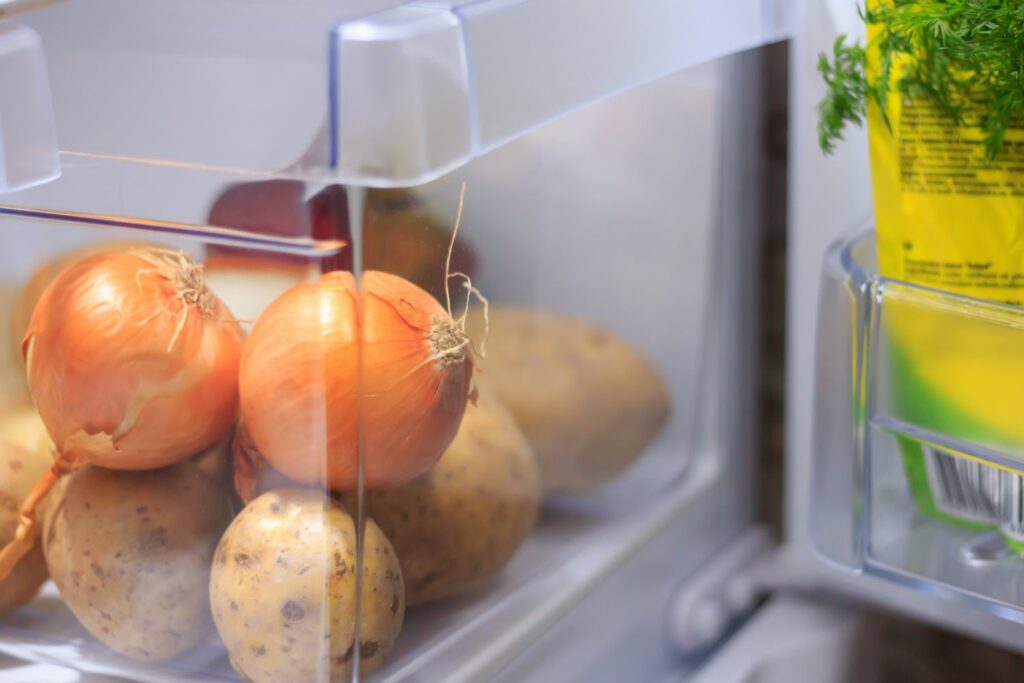
Darkened room
You should store potatoes in the dark, protected from light. If left uncovered in a bright location, the potatoes turn green and produce toxic alkaloid solanine as an antifungal agent. If eaten, this can lead to stomach problems, headaches and vomiting. Exposure to light also promotes germination, but this is only desirable immediately before planting potatoes in spring. You can also create a dark environment by storing your potatoes in moist sand.
Dry environment
Although the potato itself contains water, its skin must be completely dry when stored. Otherwise, potato diseases can quickly spread through your crop.
Check air humidity
Although they should be stored in a dry environment, the optimal humidity for potatoes is about 90% to prevent the tubers from losing water and becoming shrivelled. When storing the potatoes in sand, keep the sand moist to minimise water loss.
Can apples and potatoes be stored together?
Some fruits and vegetables – such as apples (Malus domestica) and tomatoes (Solanum lycopersicum) – secrete ethylene gas. This accelerates the ripening of sensitive vegetables and can cause the tubers to spoil prematurely. So, avoid storing potatoes with apples.
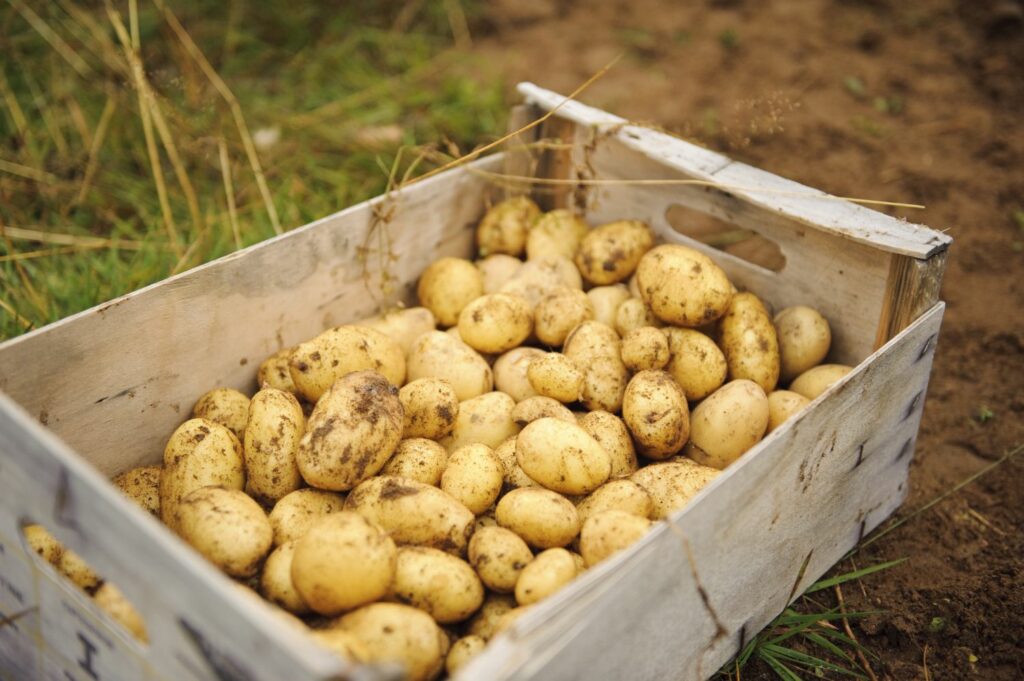
Tips for storing potatoes
To store potatoes for as long as possible, leave them unwashed. Allow the tubers to lie loosely together and check them regularly for bruises, rot and other diseases. If any of the tubers have a rotten or mouldy spot, remove the potato to prevent this from spreading.
How long can potatoes be stored?
The shelf life of potatoes in storage depends on the potato variety, the harvesting method and the storage conditions. Tubers damaged during harvest should be cooked and eaten within a few days. New potatoes, in particular, cannot be stored for long because of their thin skin. We advise keeping these potatoes in the fridge for a shorter storage period. Late potatoes, on the other hand, have a thicker skin and can be stored for months.
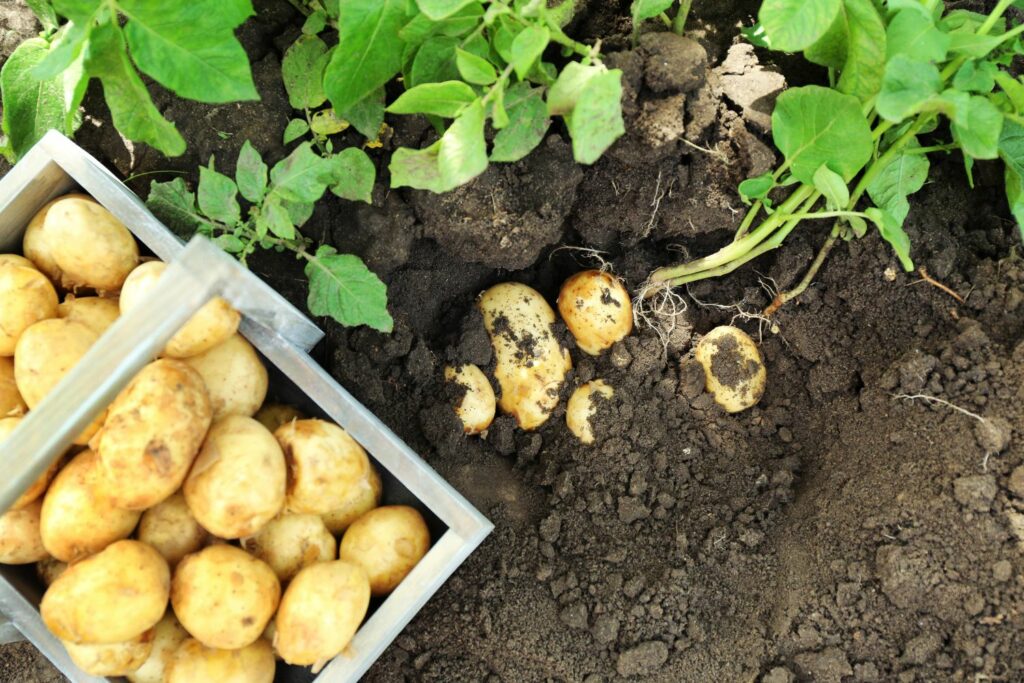
Cooking and preserving potatoes
Uncooked potatoes can be stored for a long time. However, you can also cook potatoes and then preserve them. Preserved potatoes are ready to eat and can be served as a quick side dish with cream cheese and herbs or other toppings. Here are step-by-step instructions on how to preserve potatoes:
How to preserve potatoes:
- Peel the potatoes and then chop them into cubes (or desired shape).
- Boil the potatoes in salted water for 15-20 minutes.
- In a separate pot, make the preserving liquid. Just add salt to water and boil it at 100°C for at least 10 minutes.
- Drain the potatoes and divide them between preserving jars. Be sure to leave about 2cm of space from the top rim.
- Pour the preserving liquid over the potatoes until they are completely covered. Again, be sure to leave about 2cm of space from the top of the jars. Close the jars.
- Boil the jars in a water bath (100°C) for about 90 minutes.
- Leave the jars to cool.
Did you know that you can grow potatoes without a veg patch? Read our article on how to grow potatoes in pots to find out more.



















